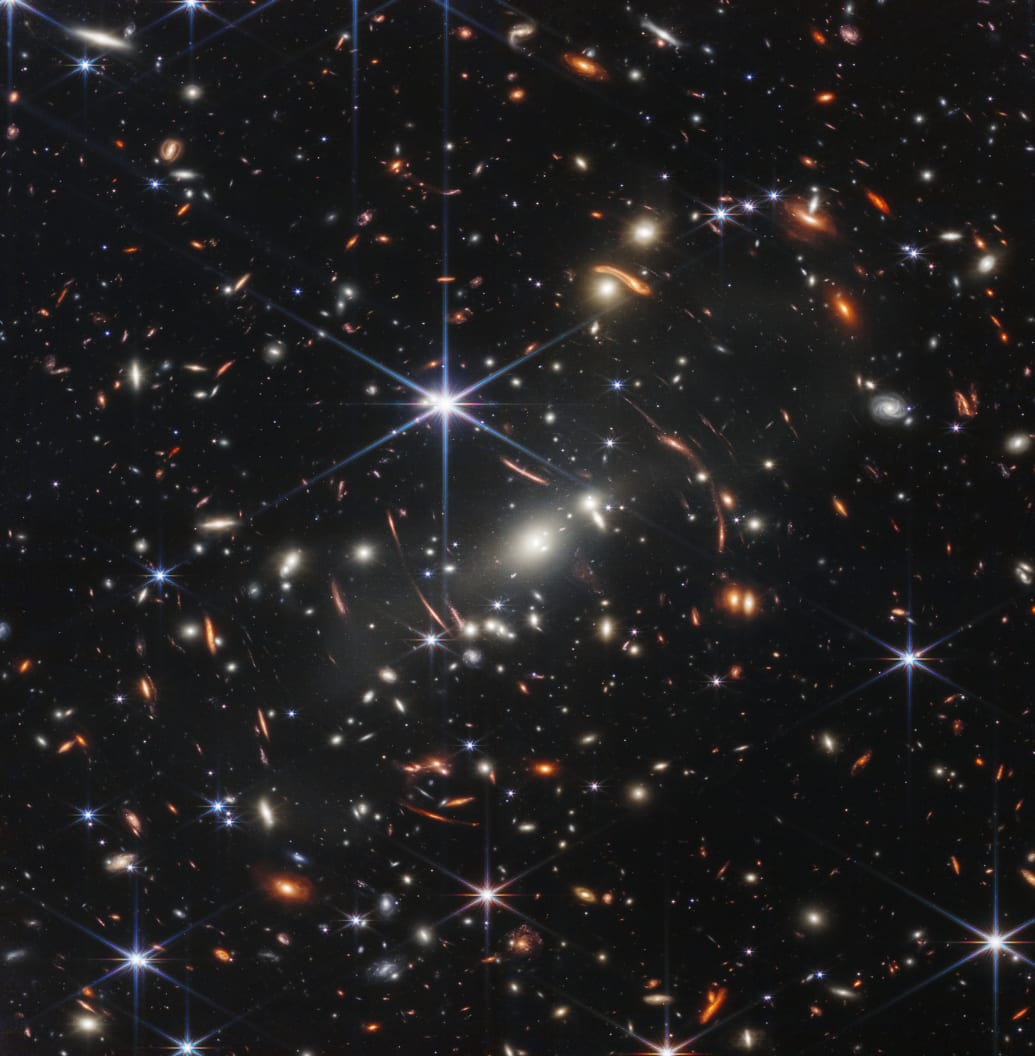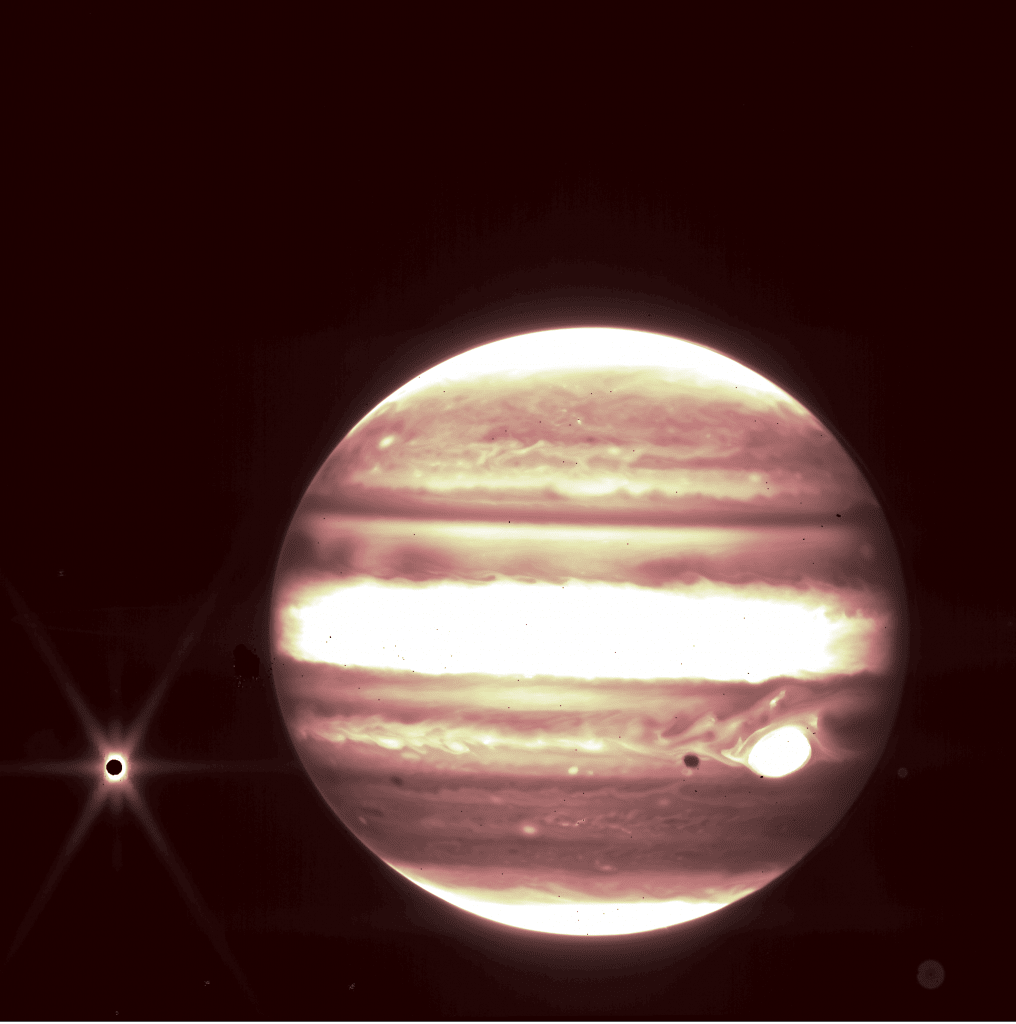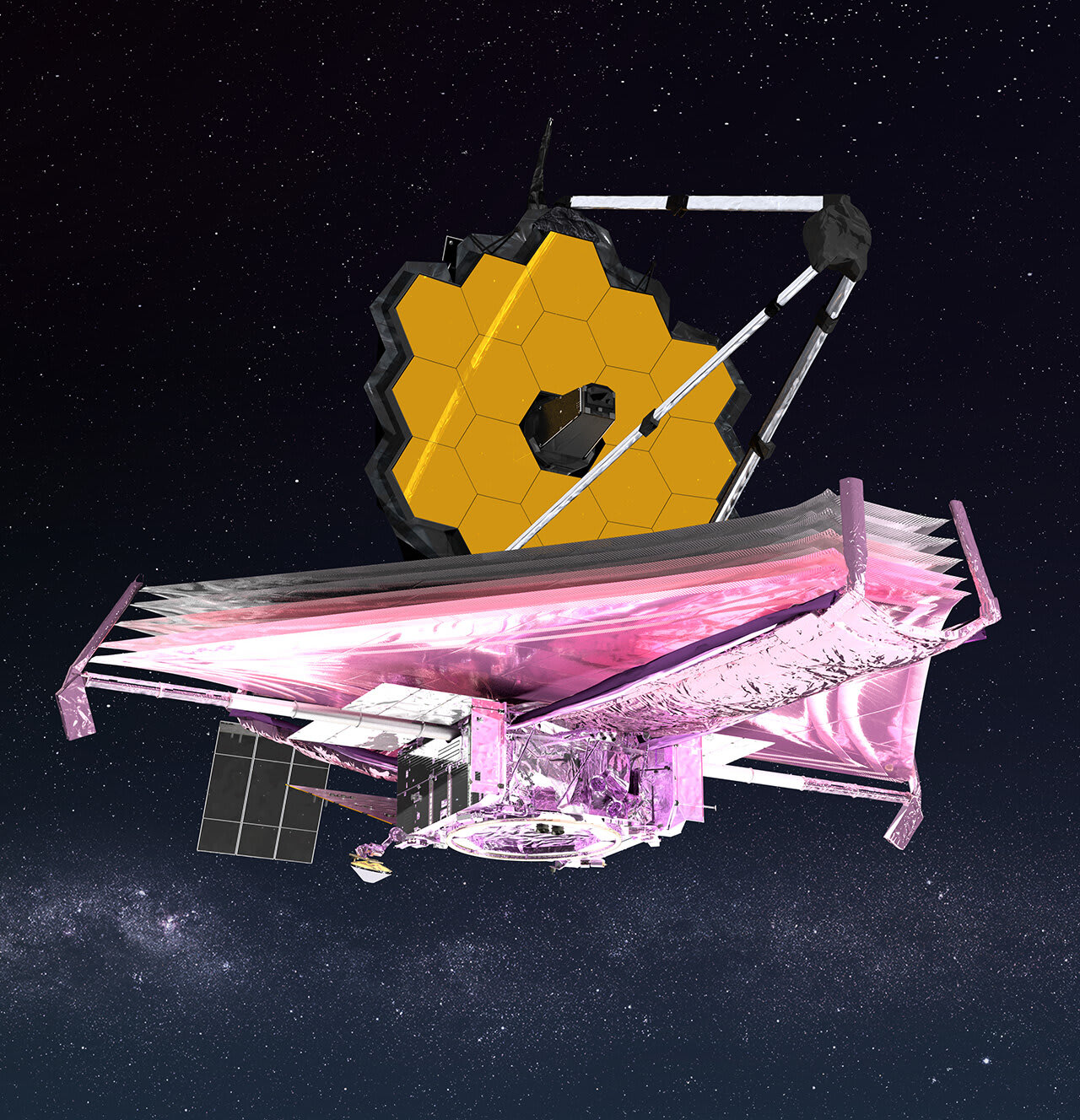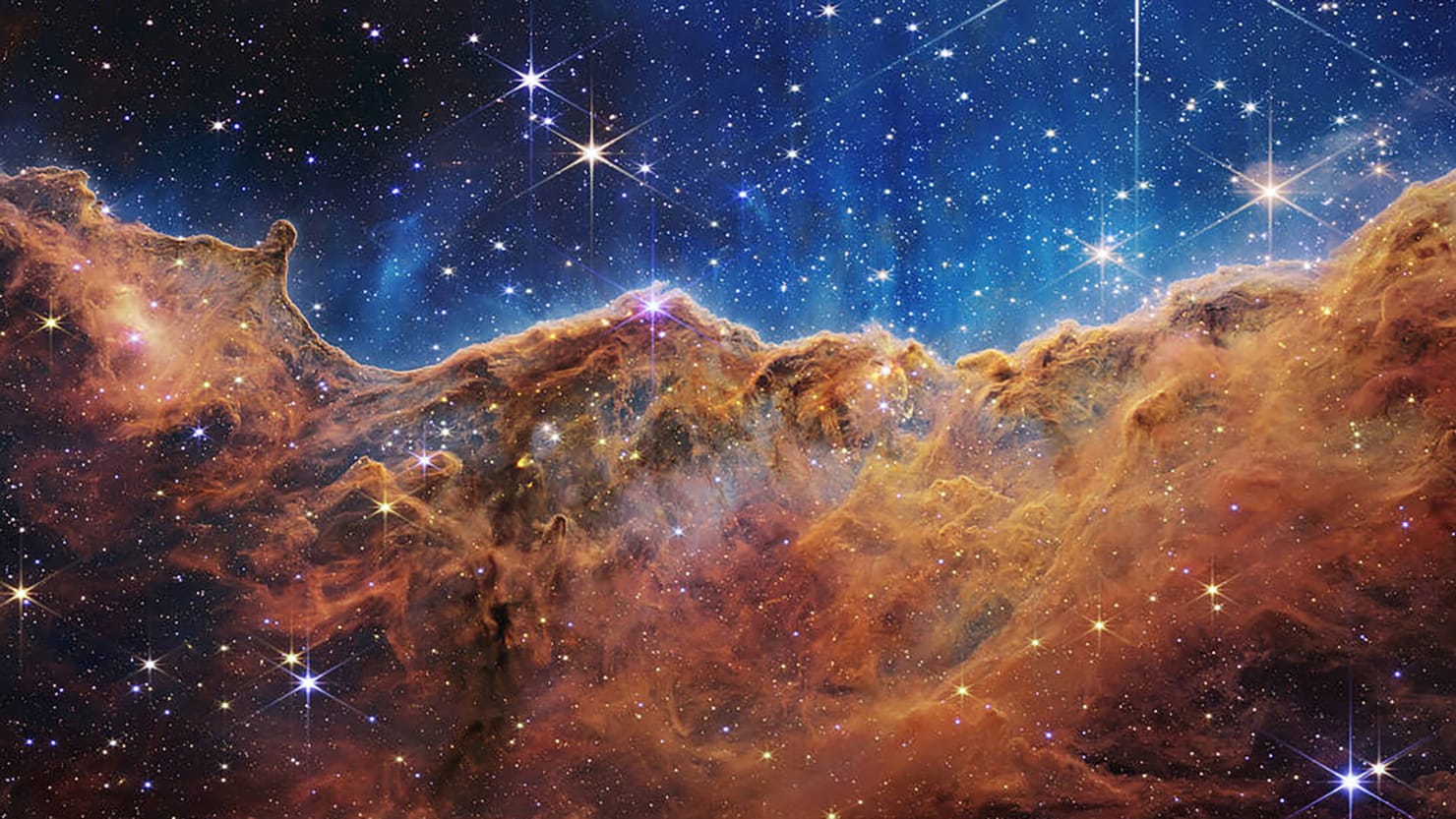What. A. Week.
On Monday, President Joe Biden unveiled the primary photograph from the hotly anticipated James Webb Area Telescope—essentially the most highly effective observatory ever launched into orbit—showcasing a surprising galaxy cluster in full coloration. To not be outdone, NASA launched one other 4 photographs the next day depicting star nurseries, galaxy teams, a very watery exoplanet, and a dying star.
Whereas the pictures had been all varied ranges of jaw-dropping, essentially the most wonderful half was that it was solely the start. Webb is fueled up for 20 years—which suggests we now have a long time value of stirring pictures and scientific discoveries forward of us. In fact, that simply begs the query: What’s subsequent for Webb?
Fairly actually, the complete universe because it seems. In truth, regardless of how astonishing the newest photographs had been, they’re truly nothing in comparison with what’s to come back. Eric Smith, this system scientist for the JWST program at NASA, mentioned as a lot in a press convention on Tuesday.
“They had been kind of apply runs with the devices,” Smith mentioned, referring to the 5 photographs launched. “We’re making discoveries and we actually haven’t even began making an attempt but. So the promise of this telescope is wonderful.”
Whereas NASA hasn’t launched a schedule of what the Webb goes to be taking a look at subsequent, right here are some things we are able to anticipate from the house observatory within the coming yr:
Sightseeing the Early Universe
Maybe the most important motive for the hype behind the Webb is the house observatory’s skill to look at a few of the earliest stars and galaxies ever fashioned. Which means having the ability to observe celestial objects as they had been shortly after the Massive Bang almost 14 billion years in the past.
The picture of the galaxy cluster SMACS 0723 debuted by Biden is one such instance. Webb captured the sunshine from the area because it appeared 4.6 billion years in the past through an ultra-deep near-infrared survey. Utilizing its Close to Infrared Spectrograph—an instrument that separates infrared mild by wavelength right into a spectrum—the observatory was in a position to collect information from one of many youngest galaxies within the discipline—which turned out to have been inside a billion years after the Massive Bang.

NASA, ESA, CSA, and STScI
And bear in mind: That is only the start. One in all Webb’s main missions is to review the early universe. Which means we’re solely getting began discovering a few of the “youngest” house objects ever found. To that finish, the complete JWST program mission can also be targeted on discovering how galaxies fashioned and advanced over eons. Its devices may also present a take a look at the lifecycle of stars as nicely—one thing the Hubble Area Telescope had hassle doing because it may solely observe seen mild.
Exploring Exoplanets and Photo voltaic Techniques
One of many photographs launched on Tuesday wasn’t {a photograph} of a celestial physique in any respect. It was a graph that confirmed the measurement of water content material within the ambiance of a large exoplanet dubbed WASP-96b.
That may sound a bit disappointing contemplating the opposite photographs, but it surely truly showcased an necessary function of Webb: the power to extra deeply examine and observe the ambiance and situations of exoplanets. That is essential to seek out areas of house that is likely to be hospitable for all times.
Faraway objects aren’t the one place it’ll be trying both. Webb can also be going to be turning an eye fixed on our personal photo voltaic system together with locations like Mars, Pluto, and Saturn to present us an much more detailed take a look at what’s in our personal yard. NASA even launched a picture captured by Webb of Jupiter yesterday utilizing its main imager, the Close to-Infrared Digital camera.

NASA, ESA, CSA, and B. Holler and J. Stansberry (STScI)
Trying to find E.T.
We will’t speak about a strong house observatory with out speaking in regards to the flying saucer-sized elephant within the room: aliens.
Since Webb can observe a few of the most distant areas of house possible, many researchers are hoping that it may discover hidden exoplanets which are appropriate for all times. These could be planets within the Goldilocks Zone, or the areas of photo voltaic programs which are simply far-off sufficient from their main star for liquid water. In different phrases, they’re excellent for all times.
Some exoplanets that Webb may begin exploring aren’t that far off both. There are a number of Earth-sized planets in a system revolving round a star 40 light-years away, dubbed TRAPPIST-1. Olivia Lim, an exoplanet researcher on the College of Montreal, has inked a while to make use of Webb within the close to future to discover TRAPPIST-1 and its planets—a number of of that are within the star’s Goldilocks Zone and signify a few of our greatest alternatives to seek out indicators of life
“The Trappist-1 system is exclusive,” Lim instructed AFP. “Virtually the entire situations there are favorable for the seek for life outdoors our photo voltaic system.”

NASA GSFC/CIL/Adriana Manrique Gutierrez
Fielding Proposals
Lim isn’t the one one sending proposals. Astronomers and scientists all around the world are clamoring to get a bit of time on the house observatory whereas they’ll.
Over the course of its roughly 20-year lifespan, the JWST program can have annual open requires submissions by researchers of all strata to suggest initiatives and experiments for the Webb to conduct. The Area Telescope Science Institute (STScI), which truly operates the observatory, can have last say in who will get chosen.
Consider it like auditions to your highschool musical—however as a substitute of getting casted in a crappy manufacturing of Into the Woods, you discover out for those who get to review 13 billion-year-old galaxies, witness the start of the universe, and hunt aliens.
Webb’s operators have accepted 266 proposals for its first yr of scientific observations, often known as Cycle 1. One of many coolest facets of that is that the entire initiatives accepted are on-line and simply accessible to your viewing pleasure. Which means for those who actually need to know what Webb goes to be as much as over the following yr, you’ll be able to click on round on the STScI web site and see for your self.
Together with what we’ve already lined on this article, Webb will likely be taking an in depth take a look at plenty of supermassive black holes, testing darkish matter, and finding out quasars.
Avoiding Disaster
Whereas the Webb is orbiting roughly one million miles away from Earth, it gained’t be alone. It has a military of engineers, scientists, and researchers on terra firma ensuring that issues run as easily as they need to. It’s no imply feat both contemplating we are able to’t precisely ship a repairperson up there if the worst case situation does occur.
Hopefully, although, if all goes in response to plan, we gained’t have to fret about that in any respect. Because the saying goes: “An oz of prevention is value a pound of remedy.” To that finish, NASA constructed Webb to be extremely hardy and able to withstanding the tough, unforgiving parts of house. This consists of instruments like its sunshield, which displays excessive quantities of daylight away from delicate electronics.
Put it one other approach: Webb gained’t break as a result of it was constructed to not break. This ethos was put to the take a look at in Could when a micrometeoroid struck the telescope. Whereas there was minor harm, the design of Webb allowed it to face up to it and proceed to function.
Whereas it is likely to be a little bit of chilly consolation for a few of us on Earth, you’ll be able to sleep soundly realizing that Webb will proceed to supply gorgeous photographs and much more wonderful discoveries for the following 20 years. And even when it’s completed, it’ll have laid the groundwork for an untold quantity of fantastic science to be found for ages to come back.



